National flower of Turkey: Turkish tulips
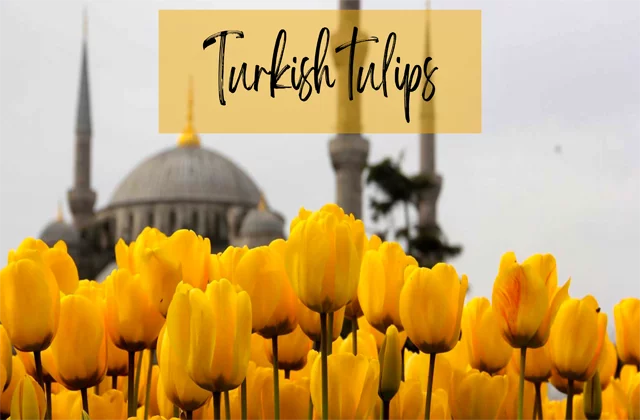
Turkish Tulips are believed to have come to Anatolia with the Turks from Central Asia and have a very important place in Turkish history.
Tulips inspired works of art and literature in the Ottoman Empire, which dates back to present-day Turkey, and were considered a sign of wealth.
After learning more about Turkish tulips, Turkey’s national flower, you can learn more about Turks and Turkish history by browsing our articles on Map of Ottoman Empire at Its Peak, Sultan Suleiman the Magnificent, Anatolia Map, Turkish lace, Turkish coffee, Turkish Oil Wrestling, Traditional Turkish Lamps, Turkish hammam, Turkish tahini molasses and traditional Turkish dresses.
Turkish Tulip
It is a unique type of tulip known as the Turkish tulip or the Istanbul tulip. This tulip is characterized by its long, slender stems and large, brightly colored flowers.
What makes the Turkish tulip different from tulips grown in Europe is its unique shape and size.
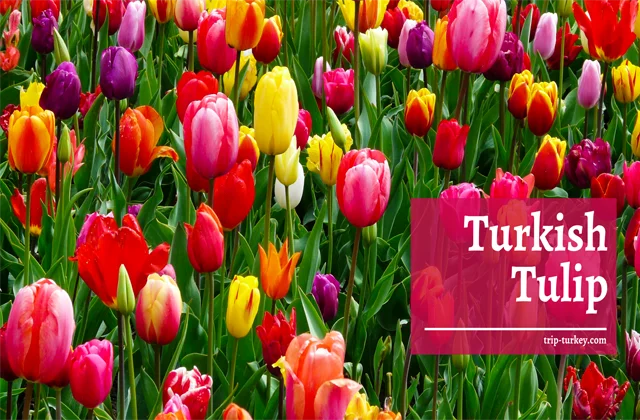
The Importance of Ottoman Tulips
Tulip has a special importance in Turkish culture where it has been grown for centuries. The Ottoman Empire was fond of tulips and often featured in the artworks and literature of the time. In addition, the period known as the stagnation period of the Ottoman Empire was called the Tulip Era.
The Ottomans also developed a unique form of tulip known as the “Istanbul tulip”, characterized by its long, slender stems and large, brightly colored flowers.
During the Ottoman Empire, the tulip was also used as a symbol of power and luxury, the gardens of the elite were filled with tulips, and tulip festivals and competitions were held.
Tulips have also been used in traditional Turkish art, including ceramics and textiles. Today, Turkey remains an important tulip producer, and the flower remains a symbol of the country’s rich cultural heritage.
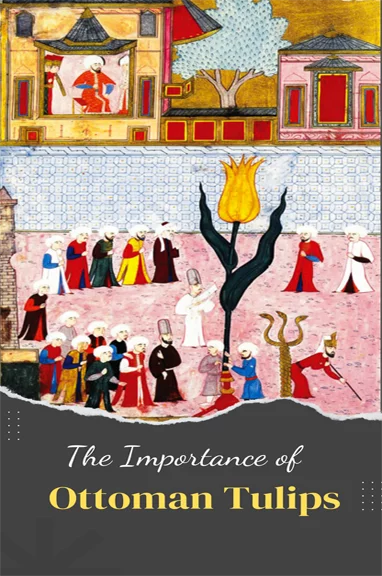
Tulip History
It is believed that tulips were brought to Anatolia with the Turks from Central Asia and then to Europe by traders and travelers in the 16th century.
Turkish Tulips took place as decorations in literary works of art and architecture during the Ottoman period. Apart from the Ottoman Empire, it plays an important role in Dutch history.
They quickly became popular in the Netherlands, where they were bred for both their beauty and their value as a commodity. The “tulip mania” of the 17th century saw the prices of tulip bulbs skyrocket, leading to a speculative bubble that eventually burst.
Despite this, the tulip remains a beloved flower in the Netherlands and around the world for its vibrant colors and delicate beauty.
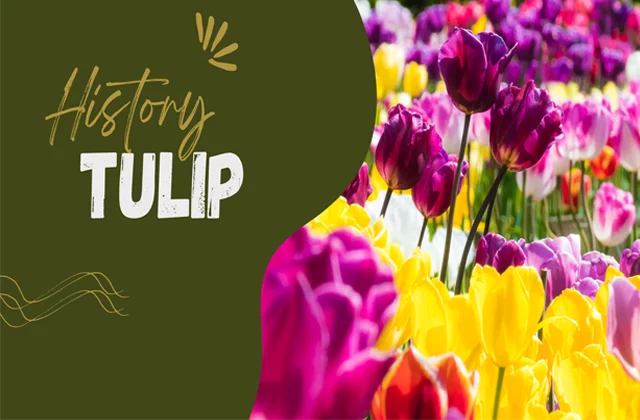
Tulip Etymology
The word “tulip” is believed to come from the Ottoman Turkish word “tülbend” or “turban”, which refers to the shape of the flower’s head.
It is thought that the flower was given this name because of its resemblance to the headscarf worn by the Ottoman elite. The word “tulip” was first used in English in the early 16th century but wasn’t widely used until the 17th century after tulips became popular in Europe.
The word entered other European languages such as French and Dutch through trade and contact with the Ottoman Empire. There are also other theories suggesting that the word “tulip” comes from the Persian word “dulband” meaning “turban” or “tulbend” meaning “turban” or “turban” in Arabic.
It is not entirely clear which of these etymologies is original.

Tulip Symbol and its meanings
The tulip is a symbol with various meanings depending on the context and culture. Some of the most common symbolic meanings associated with the tulip include:
- Ottoman Empire: The tulip was highly valued in the Ottoman Empire, where it was considered a symbol of power, wealth, and luxury. The Istanbul tulip was also developed by the Ottoman Empire, and it is considered a symbol of Turkish and Ottoman history and culture.
- Love and passion: In many cultures, the tulip is associated with love and passion due to its bright, vibrant colors and delicate beauty.
- Perfect love: The tulip is often given as a symbol of perfect love, as it is said that a tulip will only bloom when it has found its true love.
- Spring and renewal: The tulip is a flower that blooms in the spring, and it is often seen as a symbol of renewal and the arrival of warmer weather.
- Transience: The tulip’s beauty is fleeting, it blooms for a few weeks, this is why it is also associated with transience, the reminder that beauty and life are fleeting.
- Holland and the Netherlands: The tulip is closely associated with Holland and the Netherlands, where it is an important part of the culture and economy. The tulip is often used as a symbol of Dutch heritage and identity.
Overall, the tulip is a symbol that has different meanings in different cultures, but it is commonly associated with love, beauty, and spring.

Turkish tulip pattern gifts
If you want to buy a meaningful and special gift, you can think of tulip motif mugs, plates, pillows, bedspreads, or ornaments that add deep meaning to your gift.
You can take a look at some beautiful products with Turkish tulip motifs:
👉 Turkish tulip-patterned bowls.
👉Ceramic mug with Turkish tulip pattern.
👉Turkish tulip patterned bedspread.
👉 The pillow is decorated with Turkish tulips and Ottoman motifs.
If you’re also looking for tulip bulbs, you can check out these tulip seeds.
Istanbul Tulip Festival
The Istanbul Tulip Festival is an annual event that takes place April 1-30 in Istanbul, Turkey. This year, the 16th Tulip Festival will be held.
The festival celebrates the city’s deep-rooted history and cultural bond with the tulip and is an opportunity for visitors to see the beautiful tulip gardens and enjoy a variety of cultural events.
During the festival, various tulip gardens in the city are opened to the public, and visitors have the chance to see a wide variety of tulips in different colors and shapes.
The festival usually takes place in Istanbul in Emirgan Park, Gulhane Park, and many more. Organized by the Istanbul Metropolitan Municipality, the festival aims to promote the city’s cultural heritage and promote tourism.
The festival also includes activities such as traditional music and dance performances, photography exhibitions, and tulip-growing workshops. In addition, the decoration of many parks and public spaces in Istanbul with tulips throughout the festival contributes to the general atmosphere of the city.
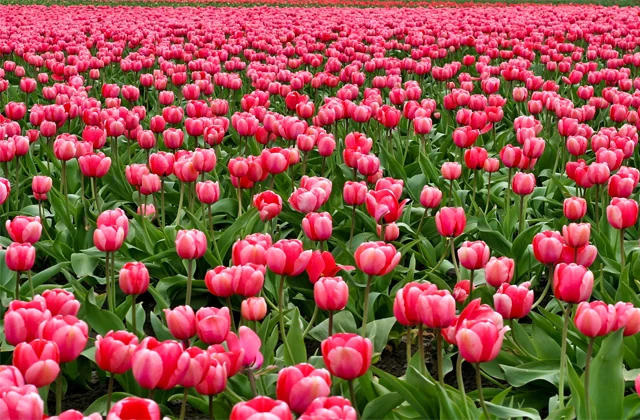
Are tulips native to Holland?
Tulips are not native to the Netherlands (Holland). They are believed to have originated in Central Asia, specifically in the region that includes present-day Kazakhstan, Kyrgyzstan, and Turkmenistan.
They were brought to Europe by traders and travelers in the 16th century, and the Netherlands quickly became a major center for the cultivation and trade of tulips.
The Dutch climate and soil proved to be ideal for growing tulips, and Dutch horticulturists began to develop new varieties of flowers.
The Tulip Mania of the 17th century, in which the prices of tulip bulbs skyrocketed, solidified the Netherlands as the center of tulip cultivation and trade. Despite this, Tulips are not native to the Netherlands, but they have been extensively cultivated and hybridized in the country for centuries, making it the center of the tulip trade and culture.
Questions about the Turkish tulip
We will give short answers to questions you may have about the Turkish tulip.
Where are the tulips from?
Tulips are thought to have spread to the Ottoman Empire and then to Europe in Central Asian countries such as Kazakhstan, Kyrgyzstan, and Turkmenistan. It is generally thought that tulips are Central Asian.
Why are tulips called tulips?
There is a strong opinion that the word “tulip” comes from the Persian word “dulband” meaning “turban” or the Arabic word “tülbend”.
What is the national flower of Turkey?
The traditional and national flower of Turkey, which came from the Ottoman Empire, is the tulip. You can see tulips in all of Turkey’s palaces and old parks.
When Istanbul Tulip festival?
The Istanbul tulip festival is held every year between April 1 and 30, with the arrival of spring.
